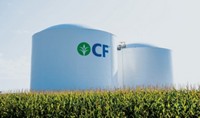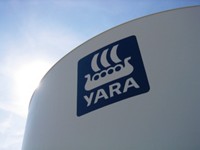Advertisement
Grab your lab coat. Let's get started
Welcome!
Welcome!
Create an account below to get 6 C&EN articles per month, receive newsletters and more - all free.
It seems this is your first time logging in online. Please enter the following information to continue.
As an ACS member you automatically get access to this site. All we need is few more details to create your reading experience.
Not you? Sign in with a different account.
Not you? Sign in with a different account.
ERROR 1
ERROR 1
ERROR 2
ERROR 2
ERROR 2
ERROR 2
ERROR 2
Password and Confirm password must match.
If you have an ACS member number, please enter it here so we can link this account to your membership. (optional)
ERROR 2
ACS values your privacy. By submitting your information, you are gaining access to C&EN and subscribing to our weekly newsletter. We use the information you provide to make your reading experience better, and we will never sell your data to third party members.
Business
The Coming Consolidation Wave In Fertilizers
Crop nutrient makers fear a future of lower prices—and look to mergers to save them
by Alexander H. Tullo
October 5, 2015
| A version of this story appeared in
Volume 93, Issue 39

This has been the summer of the deal in the crop nutrient business.
The season was kicked off by a proposed transaction that would make the biggest potassium supplier on the planet, Potash Corporation of Saskatchewan, even bigger. It ended with CF Industries and OCI inking an agreement to form the world’s largest publicly traded nitrogen fertilizer maker.
Experts take the deal-making as a sign that fertilizer makers, after enjoying a few good years of high profits and expansion, are now preparing for the inevitable bust by consolidating, pruning assets, and reducing costs.
Farmers could not feed the world without nitrogen, phosphorus, and potassium, known as NPK in the trade. In more primitive times, farmers acquired these three essential plant nutrients from sources such as fish bones and guano.
Today, the most basic nitrogen fertilizer, ammonia, is produced by reacting atmospheric nitrogen with natural-gas-derived hydrogen. To make urea, a solid nitrogen source, the ammonia is combined with carbon dioxide.
Potassium is found in underground deposits of potassium chloride, also known as potash. The largest deposits are found in Canada and Russia. Farmers usually apply a purified form of the salt directly to crops.
Phosphorus originates in phosphate rock mined in Florida and North Africa. It is reacted with sulfuric acid to make phosphoric acid, which is combined with ammonia to make ammonium phosphate fertilizers.
When agriculture boomed in the 2000s, due in no small part to economic development in China and other emerging nations, fertilizer prices soared. According to PotashCorp, urea prices averaged $514 per ton in 2012, nearly twice what they were in 2005. Over the same period, phosphate prices more than doubled to $522 per ton, and potash prices nearly tripled to $424 per ton.
The high prices meant fat profits for fertilizer suppliers, which in turn made huge investments in new facilities that are now starting to come on-line. The International Fertilizer Industry Association expects $125 billion of additional investment between 2014 and 2019.
The world will see 44 million metric tons of new urea and 8 million metric tons each of new phosphoric acid and potash capacity, the association says. These additions will bring global production capacity for urea, phosphoric acid, and potash to 252 million, 63 million, and 61 million metric tons per year, respectively.
But demand won’t grow as fast, the association predicts. As a consequence, prices and profitability are likely to slip in the coming years. In fact, they have been falling since 2012.
As capacity increases and prices fall, fertilizer producers look for advantages over their competitors. They seek expanded market share, the newest equipment, and access to cost-advantaged feedstocks, according to Neil Fleishman, senior industry analyst for the Keene, N.H.-based fertilizer consulting group Green Markets. “We think that is the main catalyst for why people are doing deals,” he says. “As supply increases, there’s a scramble for scale.”
CF’s agreement illustrates the point. The $8.2 billion purchase of assets from OCI will allow it to leapfrog Yara to become an international fertilizer giant.
One of the key assets CF is acquiring is a gleaming nitrogen fertilizer plant in Wever, Iowa, set to open early next year. “It is right smack in the middle of the Corn Belt,” Fleishman says, rather than on the Gulf Coast, where many nitrogen facilities are. It will also take advantage of low-cost natural gas from shale.
CVR Partners’ recently announced purchase of Rentech Nitrogen for about $500 million has a similar rationale. CVR will get Rentech’s East Dubuque, Ill., fertilizer plant, which also is a low-cost supplier situated squarely in corn country.
In yet another deal, the St. Paul-based cooperative CHS agreed to acquire a $2.8 billion stake in CF assets in exchange for a nitrogen fertilizer supply agreement. The deal allows CHS to cancel plans to build an expensive fertilizer plant in North Dakota.
PotashCorp would like to acquire the German potassium and salt maker K+S. But, thus far, K+S shareholders have rebuffed the $8.7 billion proposal on the grounds that it undervalues the company and might lead to cutbacks in its calcium chloride business and its German potash mines.
A K+S purchase would add 7% to PotashCorp’s 19% global potash market share. The crown jewel that PotashCorp covets is a $3 billion potash mine K+S is building on PotashCorp’s home turf of Saskatchewan.
In a July report, J.P. Morgan stock analyst Jeffrey J. Zekauskas emphasized the importance of the deal to PotashCorp. “We view the consequences to PotashCorp as negative were the transaction frustrated,” he told clients. “It would indicate limits in improving the general global potash industry structure.”
Green Markets’ Fleishman observes that because the potash industry is in the hands of a few large players, opportunities for further consolidation are few. The exceptions are smaller transactions to scoop up regional players, such as Israel Chemicals’ purchase of a mine being built in Ethiopia.
The other fertilizer sectors—nitrogen and phosphorus—are far more fragmented. Opportunities exist for more mergers in nitrogen plus transactions in the phosphorus segment as companies angle to take over low-cost mining assets in North Africa and elsewhere. “I would be surprised,” Fleishman says, “if you didn’t continue to see consolidation.”




Join the conversation
Contact the reporter
Submit a Letter to the Editor for publication
Engage with us on Twitter